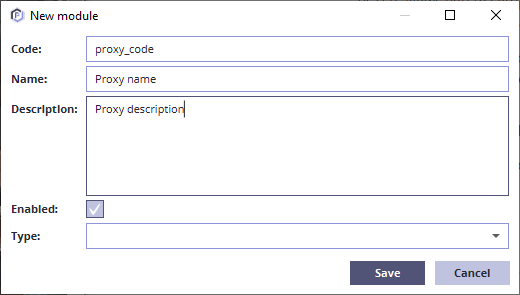PETEP Proxies
PETEP allows you to setup multiple proxies that will run in one application instance. However, you have to be aware that these proxies will share some resources, especially interceptors, which might result in decreased performance.
As far as internal extensions are concerned, PETEP currently supports TCP, simple HTTP & WebSocket and UDP protocols. TCP, HTTP and Websockets also have basic SSL/TLS support, which allows you specify both client and server certificates.
Proxies configuration
Proxies can be configured inside PETEP (Setting → Proxies), where you can see the list of currently created proxies.

If you want to create new proxy, just click on the new button fill in the configuration dialog that will appear. Proxy configuration is divided into section for common proxy attributes and section for type-specific configuration, which is loaded dynamically after the type gets selected.

Common proxy configuration
Proxies have 4 basic attributes:
- Code - internally used unique identificator of the proxy, only A-Za-z0-9-_. characters are allowed.
- Name - label that will be displayed in most of the application interface.
- Description - optional.
- Enabled - determines whether the proxy will be started when starting PETEP core.
Type-specific configuration
Configuration of proxy module is dependent on the type of proxy you are willing to setup (TCP, Websockets, ...). If you want to know how to configure the proxy, check the specific manual in the menu or in-application guide.